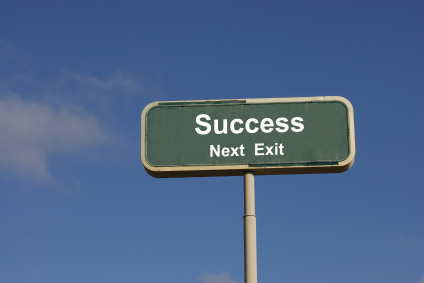Three Steps To Get Your Employees Ready For Change
This summer (2011), my daughter graduated from high school. This was a highly anticipated change event. Like many parents, I had been looking forward to seeing her graduate for months, perhaps even years. Yet, as she walked across the stage to get her diploma, I felt a deep sense of loss. As I looked around the hall at other mothers dabbing their eyes and fathers fidgeting, I knew I was not alone.
At that moment, I was reminded of how a single change event was both an ending and a beginning.
 I also noticed that my response to the event was determined by whether I focused on the ending or the beginning. And this directly influenced my change readiness. When I focused on the change as the end (of her childhood), I experienced a sense of loss and felt sad. When I focused on the change as the beginning (of her adulthood) and the next phase of our lives, I became more aware and open to the opportunities.
I also noticed that my response to the event was determined by whether I focused on the ending or the beginning. And this directly influenced my change readiness. When I focused on the change as the end (of her childhood), I experienced a sense of loss and felt sad. When I focused on the change as the beginning (of her adulthood) and the next phase of our lives, I became more aware and open to the opportunities.
Help People to Accept the End with the Beginning
A change event as both an ending and a beginning has implications for organizational change. To adopt the new state, change-recipients need to accept the ending but focus on the new state. Just shifting the change-recipients focus is not enough for organizational change success, but it is necessary. Without this shift in focus, change cannot happen.
Like the graduation, where the change recipients focus their attention will define their response. It directly influences whether their energy is focused on maintaining the current state or moving toward the new state. One important task of a change leader is to help the change-recipients understand that change is not either an ending or a beginning. It is both an ending, and a beginning. Leaders who effectively balance the old system’s ending with the beginning of the new system can increase the change-recipients’ level of readiness. William Bridges author of Managing Transitions said, “It is the great paradox of change: to maintain continuity we must change”.
Raising Change Readiness
Here are three things you can do to help people see the beginning with the ending and raise your organization’s change readiness:
-
- Talk about the need for change and allow time for people to internalize this need. The need for the change should be clearly understood by everyone affected — it must be internalized. When we internalize the need for change, it becomes meaningful. Adopting the new becomes tied to both our success and our failure. If the students had not internalized the need to complete high school (almost a decade ago) and the teachers and parents had not enabled the internalization, graduation could not have happened.
- Acknowledge the ending of the current state with respect. Remember that what the organization now considers old or in need of change was once the new idea. As my daughter and I move through our significant life transition, we do find ourselves looking back. Not to wish for the past, but to acknowledge where it has brought us, understand how it has shaped our relationship, and use it as a building block for an even better relationship.
- State a clear, concise, and concrete intended outcome that is meaningful to the change-recipients and the organization. It should provide a clear and concrete picture of the new environment. This is essential for change readiness. This year’s graduates couldn’t possibly know exactly what the future holds, but as they accepted their diplomas, each one stated a clear intended outcome for the year ahead. They were looking toward life after high school. Every change requires people to let go of the current state and adopt a new state. In this respect, every change is both an ending and a beginning. Leaders that help their employees balance the ending with the beginning can raise the level of change readiness in their organization.
Updated from Original Version published Sept 6, 2011 (September 5, 2016)















Leave a Reply
Want to join the discussion?Feel free to contribute!